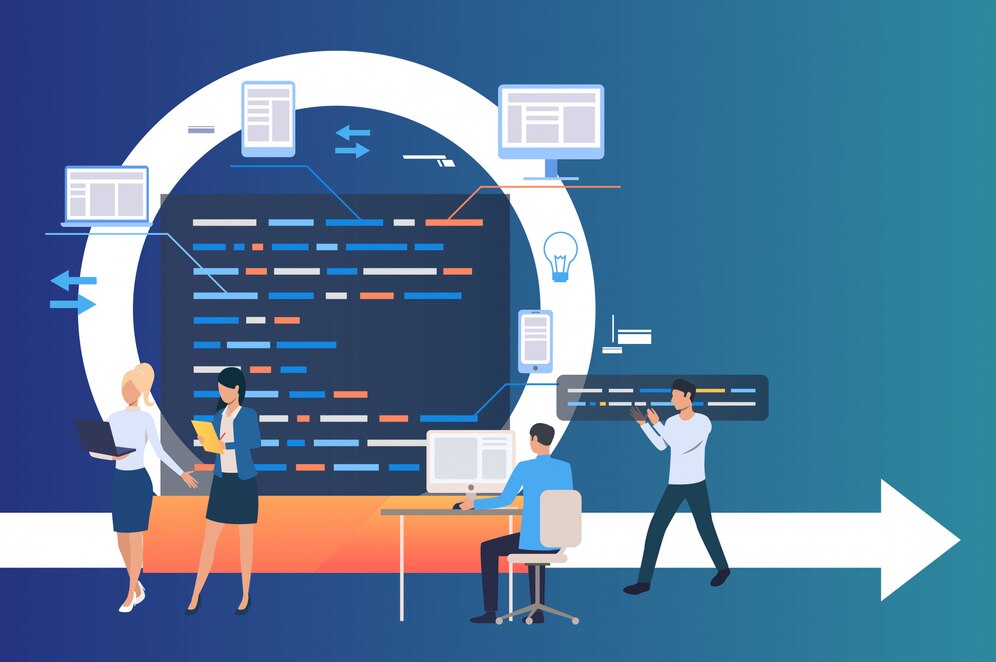
Define a Clear Vision: The Key to Success
With today’s hectic digital landscape, a Sydney software development agency must synchronize software development perfectly with business goals to enhance efficiency, improve customer experiences, and achieve a competitive advantage. Without direction, projects get lost, and money is spent to no avail. Involving critical stakeholders, developing a strategic roadmap, and establishing KPIs make sure every development effort leads to the big business picture.
Break Down Communication Barriers: Encourage Collaboration
Successful software projects require the secret ingredient of good communication between developers and business leaders. Siloed teams end up in misalignment, waste of potential, and inefficiency. Open discussion, agile frameworks such as Scrum or Kanban, and frequent check-ins can keep all people aligned and heading towards common goals.
Prioritize Features That Deliver Real Business Value
Not all software functionality is equal—some creates high-impact, while others provide little value. To make sure development efforts are directed at high-value activities, companies should employ prioritization models such as the MoSCoW method, perform impact analysis, and create a Minimum Viable Product (MVP) to test core functionalities before large-scale implementation.
Data-Driven Decisions: Let the Numbers Speak
While gut feelings do not go amiss, data-driven decisions are much more trustworthy. Using tracking tools, A/B testing, and real-time analysis of user behavior enable teams to make informed decisions, streamline development strategies, and ensure that software is always aligned with business objectives.
Build for Scalability: Future-Proof Your Software
As business requirements change, software needs to scale with ease. Selecting contemporary, cloud-based technologies, adopting modular architecture, and building systems that can adapt for growth in the future avoids costly rebuilds and facilitates long-term viability.
Provide an Exceptional User Experience (UX)
Regardless of how good a custom software solution is, it will be unsuccessful if people have trouble working with it. A simple, fluid user interface is key to adoption and usage. Performing usability testing, iterating on UI/UX design based on user requirements, and ongoing implementation of feedback result in software that boosts efficiency and satisfaction.
Sync Development Timelines with Business Goals
Time equals money, and software development must be in tune with business targets and market requirements. Timely execution without loss of quality is ensured through agile development cycles, definite deadlines, and dividing the project into bite-sized sprints.
Measure, Adapt, and Improve: The Cycle Never Ends
Even the best-aligned software needs constant tuning. Setting up success metrics, post-launch analysis, and a culture of continuous innovation enable companies to keep pace with changing needs and market conditions.
Final Thoughts: Power Growth with Purposeful Software
Aligning software development with business goals is not something to be done once but rather an ongoing process requiring dedication, teamwork, and adaptability. By setting clear objectives, promoting open communication, leveraging data-driven insights, and prioritizing user experience, businesses can create software that not only meets current demands but also drives long-term growth and success.

The Hidden Business Power of Storytelling Through Books

Diamond Painting Apps & Digital Tools for 2025 Artists

Meeting Global Tastes: The Versatility of Commercial Tortilla Makers

Accelerating drug discovery through the DEL-ML-CS approach

AI in Marketing Is No Longer a Buzzword — It’s the Strategy

The Full Guide To Penetration Testing

Pixel 10 Pro Fold Case: Why Choose Aramid Fiber?

MT4 for Mac vs Windows: Which Version Works Better for Traders








